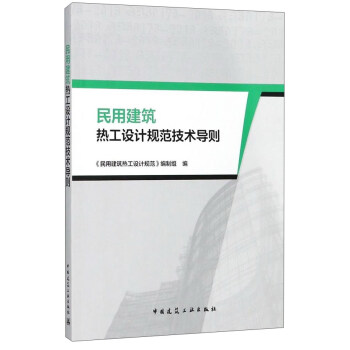![空调系统建模及控制(英文版) [Modeling and Control in Air-conditioning Systems]](https://pic.windowsfront.com/12268243/5a5890afN1a24c58b.jpg)

具体描述
内容简介
《空调系统建模及控制(英文版)》主要内容包括:集中空调系统状态空间建模原理、过程及图论描述方法,空调系统中传感器虚拟标定技术及虚拟传感器模型,双环路模型预测控制模型,空调负荷组合预测模型,空调系统能量评价分析模型,空气处理单元机群(AHUs)协同控制模型,以及基于负荷预测的空调系统全局优化节能控制模型。《空调系统建模及控制(英文版)》内容新颖且信息量大,注重于计算机仿真与实验相结合以及理论分析和应用实例相结合,是一本建筑环境与设备工程和自动控制学科深度交叉、系统反映新成果的难得的参考书。
《空调系统建模及控制(英文版)》可供从事建筑环境与设备工程、热能工程、制冷与低温工程、自动控制工程以及相关专业的本科生和研究生参考使用,也可作为从事相关领域研究的科研人员的参考用书。
内页插图
目录
1 Introduction1.1 Background
1.2 Modeling Approaches in HVAC Field
1.2.1 Physics-Based Modeling Approach
1.2.2 Data-Driven Modeling Approach
1.2.3 Hybrid Modeling Approach
1.3 Proposed Methods
1.3.1 State-Space Modeling
1.3.2 Graph-Theory Modeling
1.3.3 Combined Forecasting Modeling
1.3.4 Decomposition-Coordination Algorithm for Global Optimization Model
1.3.5 Virtual Calibration for HVAC Sensors
1.3.6 Model-Based Predictive Control (MPC)
1.4 Organization of This Book
References
2 Component Modeling with State-Space Method
2.1 Basic Knowledge about State-Space Modeling Method
2.2 Modeling for HVAC Components
2.2.1 Water-to-Air Heat Exchanger
2.2.2 Chiller
2.2.3 Cooling Tower
2.2.4 Duct (Pipe) and Fan (Pump)
2.2.5 Air-Conditioned Room Modeling
2.3 Modeling for HVAC System
2.3.1 Component Model Connection
2.3.2 State-Space Representation for HVAC System
2.3.3 Case Study
References
3 Dynamic Simulations with State-Space Models
3.1 On Water-to-Air Surface Heat Exchanger
3.1.1 Subjected to Different Perturbations
3.1.2 For Different Initial Conditions
3.2 On Chiller
3.2.1 Subjected to Different Perturbations
3.2.2 For Different Initial Conditions
3.3 On Cooling Tower
3.3.1 Subjected to Different Perturbations
3.3.2 For Different Initial Conditions
3.4 On Duct and Pipe
3.4.1 On Straight-Through Duct
3.4.2 On Straight-Through Pipe
3.5 On Air-Conditioned Room
3.5.1 Basic Conditions
3.5.2 Subjected to Different Perturbations
4 Graph-Theory Modeling and Structure-Matrix Analysis
4.1 Graph-Theory Modeling for HVAC Component State-Space Models
4.1.1 Fundamental Rules
4.1.2 Case Study
4.2 Graph-Theory Modeling for HVAC System
4.2.1 Basic Method
4.2.2 Case Study
4.3 Structure-Matrix Analysis Approach
4.3.1 Model Structural Matrix
4.3.2 Reachability Analysis of Model Input-Output
4.3.3 Controllability/Observability Analysis of Model
4.3.4 Case Study
References
5 Virtual Measurement Modeling
5.1 Virtual Calibration
5.1.1 Conventional Calibration
5.1.2 Methodology of Virtual In Situ Calibration
5.1.3 Case Study
5.2 Virtual Sensing
5.2.1 Development Methodology for Virtual Sensing
5.2.2 Case Study
5.2.3 Model Development
References
6 Control Design Based on State-Space Model
6.1 Model-Based Predictive Control (MPC)
6.1.1 Introduction of MPC
6.1.2 MPC in Broad Definition
6.2 Applications of MPC in HVAC Field
6.2.1 Control of a Hybrid Ventilation Unit
6.2.2 Control of Space Thermal Conditioning
6.3 State-Space Feedback Control System Design
6.3.1 Basic Principle
6.3.2 Control System Design for Water-to-Air Heat Exchanger
6.3.3 MATLAB Simulation of the Control System
6.3.4 Control System Design for Refrigeration System
References
7 Combined Forecasting Models for Air-Conditioning
Load Prediction
7.1 Typical Methods
7.1.1 MLR Modeling
7.1.2 ARIMA Modeling
7.1.3 GM Modeling
7.1.4 ANN Modeling
7.2 Combined Forecasting Model Based on Analytic Hierarchy Process (AHP)
7.2.1 Principles of the Combined Forecasting Method
7.2.2 Determining Weights by Analytic Hierarchy Process (AHP)
7.2.3 Combined Forecasting Model for Hourly Cooling Load Prediction Using AHP
7.3 Forecasting Model Based on Neural Network and Combined Residual Error Correction
7.3.1 Model Development
7.3.2 Case Study
References
8 Energy Analysis Model for HVAC System
8.1 Energy Models for HVAC Components
8.1.1 Chiller
8.1.2 Boiler
8.1.3 Pump and Fan
8.1.4 Cooling Tower
8.1.5 Water-to-Air Heat Exchanger
8.2 Energy-Saving Analysis on VAV Air-Conditioning System
8.2.1 Evaluation Program for Energy Saving of VAV System
8.2.2 Case Study
8.3 Energy Analysis on VAV Air-Conditioning System with Different Air-Side Economizers
8.3.1 Scheme for Air Economizer Cycle
8.3.2 Case Study
References
9 Optimal Control of HVAC System Aiming at Energy Conservation
9.1 Air-Side Synergic Control
9.1.1 Background and Basic Idea
9.1.2 Mathematic Deduction of Synergic Control Model
9.1.3 Control Logic Details
9.1.4 Case Study
9.2 Global Optimization Control
9.2.1 Model Development
9.2.2 Decomposition-Coordination Algorithm for Model Solution
9.2.3 Case Study
Appendix
References
10 Modeling and Control Strategies for VAV Systems
10.1 Background and Research Status
10.2 Modular Modeling with Simulink Tool
10.3 Model Library for Components of VAV System
10.3.1 VAV Terminal Unit
10.3.2 Variable Speed Fan
10.3.3 Air Ducts
10.3.4 Other Local Resistance Components
10.3.5 Application of Component Model Library: Case Study
10.4 Control Strategies for VAV System
10.4.1 Constant Static Pressure Method
10.4.2 Total Air Volume Method
10.4.3 Variable Static Pressure Method Based on Trim-and-Respond Logic
10.5 Control Sequences for VAV System with Different Terminal Units
10.5.1 For Cooling-Only Terminal Unit
10.5.2 For Reheat Terminal Unit
10.5.3 For Series Fan-Powered Terminal Unit
10.6 Test Script for VAV Control Study
10.6.1 Preparation
10.6.2 General Inspection of Air-Handling and Distribution System
10.6.3 Trend Data Review
References
前言/序言
能源是经济社会发展的基础,同时也是影响经济社会发展的主要因素。为了满足经济社会发展的需要,进入21世纪以来,短短十年间(2002-2012年),全世界一次能源总消费从96亿吨油当量增加到125亿吨油当量,能源资源供需矛盾和生态环境恶化问题日益突显。在此期间,改革开放政策的实施极大地解放了我国的社会生产力,我国国内生产总值从10万亿元人民币猛增到52万亿元人民币,一跃成为仅次于美国的世界第二大经济体,经济社会发展取得了举世瞩目的成绩!
为了支持经济社会的高速发展,我国能源生产和消费也有惊人的进步和变化,此期间全世界一次能源的消费增量28.8亿吨油当量竟有57.7%发生在中国!经济发展面临着能源供应和环境保护的双重巨大压力。
目前,为了人类社会的可持续发展,世界能源发展已进入新一轮战略调整期,发达国家和新兴国家纷纷制定能源发展战略。战略重点在于:提高化石能源开采和利用率;大力开发可再生能源;最大限度地减少有害物质和温室气体排放,从而实现能源生产和消费的高效、低碳、清洁发展。对高速发展中的我国而言,能源问题的求解直接关系到现代化建设进程,能源已成为中国可持续发展的关键!因此,我们更有必要以加快转变能源发展方式为主线,以增强自主创新能力为着力点,规划能源新技术的研发和应用。
在国家重视和政策激励之下,我国能源领域的新概念、新技术、新成果不断涌现;上海交通大学出版社出版的江泽民学长著作《中国能源问题研究》(2008年)更是从战略的高度为我国指出了能源可持续的健康发展之路。为了“对接国家能源可持续发展战略,构建适应世界能源科学技术发展趋势的能源科研交流平台”,我们策划、组织编写了这套“能源与环境出版工程”丛书,其目的在于:
一是系统总结几十年来机械动力中能源利用和环境保护的新技术新成果;
二是引进、翻译一些关于“能源与环境”研究领域前沿的书籍,为我国能源与环境领域的技术攻关提供智力参考;
三是优化能源与环境专业教材,为高水平技术人员的培养提供一套系统、全面的教科书或教学参考书,满足人才培养对教材的迫切需求;
四是构建一个适应世界能源科学技术发展趋势的能源科研交流平台。
该学术丛书以能源和环境的关系为主线,重点围绕机械过程中的能源转换和利用过程以及这些过程中产生的环境污染治理问题,主要涵盖能源与动力、生物质能、燃料电池、太阳能、风能、智能电网、能源材料、大气污染与气候变化等专业方向,汇集能源与环境领域的关键性技术和成果,注重理论与实践的结合,注重经典性与前瞻性的结合。图书分为译著、专著、教材和工具书等几个模块,其内容包括能源与环境领域内专家们最先进的理论方法和技术成果,也包括能源与环境工程一线的理论和实践。如钟芳源等撰写的《燃气轮机设计》是经典性与前瞻性相统一的工程力作;黄震等撰写的《机动车可吸入颗粒物排放与城市大气污染》和王如竹等撰写的《绿色建筑能源系统》是依托国家重大科研项目的新成果新技术。
用户评价
对于“控制”这部分,我的期望是它能够提供一套系统性的控制策略,而不仅仅是罗列一些算法。我希望作者能够从最基本的PID控制开始,详细讲解其原理、整定方法以及在空调系统中的应用局限性。随后,我期望看到更先进的控制技术,例如模型预测控制(MPC)。MPC因其能够考虑系统约束和未来预测的特性,在能源效率和舒适度方面具有显著优势,因此我非常希望能深入了解其在空调系统中的具体实现,包括如何建立预测模型,如何进行优化计算,以及如何处理各种工况下的不确定性。此外,我还希望书中能讨论一些智能控制方法,如模糊逻辑控制、神经网络控制,甚至强化学习在空调系统中的应用潜力,探讨它们如何能够提升系统的自适应能力和鲁棒性。对于如何根据不同的应用场景(如住宅、商业建筑、工业环境)选择最合适的控制策略,我也希望能有相关的指导和建议。
评分考虑到“建模”和“控制”是紧密相连的,我期望这本书能够清晰地阐述它们之间的相互关系。一个准确的系统模型是设计有效控制器的基础,而控制器的性能反过来也会影响模型的验证和优化。我希望作者能够详细讲解如何利用实际运行数据来验证和校准模型,以及如何根据控制器的性能反馈来改进模型。例如,如果一个控制器在某个工况下表现不佳,这可能意味着模型在该工况下的准确性有待提高。书中能提供一些关于模型识别(model identification)和参数估计(parameter estimation)的技术,来帮助读者构建和维护高质量的模型,将是我非常期待的部分。
评分最后,作为一个想要提升自己专业技能的读者,我期望这本书能够提供清晰的学习路径和深入的思考。我希望作者能够循序渐进地介绍知识,从基础概念到高级应用,并鼓励读者进行独立思考和探索。书中提供的参考文献、进一步阅读的建议,以及可能的习题或项目,都将有助于我巩固所学知识,并将其应用到未来的学习和工作中。我希望这本书不仅仅是一本教材,更能成为我在这个领域内不断进步的启迪者和伙伴。
评分除了理论知识,我更希望能从书中学习到实际工程应用中的经验和挑战。一个好的技术书籍不仅能传授知识,更能分享作者在实际项目中遇到的问题以及解决方案。我希望书中能够包含一些真实的案例研究,展示不同类型空调系统(如VRV系统、风冷冷水机组系统等)的建模和控制过程,以及在实际部署中遇到的困难,例如传感器精度问题、执行器响应延迟、通信故障等,并提供相应的应对策略。这些宝贵的工程经验,将大大缩短我从理论到实践的学习曲线,让我能够更好地理解书本知识在现实世界中的应用。
评分这本书的书名是《空调系统建模及控制(英文版)》,但我还没有阅读,因此无法提供具体的章节内容评价。然而,基于书名本身,我可以从一个潜在读者的角度,想象并描述一些与此相关的、但并非直接包含在书本具体章节内容中的期望和思考。 首先,这本书的标题“空调系统建模及控制”本身就勾勒出了一个相当专业且具有挑战性的领域。作为一个对该领域感兴趣的读者,我首先会期待它能够深入浅出地解析复杂的空调系统背后的物理原理。例如,在“建模”这个部分,我期望它能详细阐述如何将实际的空调系统,如蒸发器、冷凝器、压缩机、膨压阀等关键组件,转化为数学模型。这其中可能涉及热力学、流体力学以及传热学等多个学科的知识。我希望作者能够清晰地解释各种建模方法,比如基于物理的模型(physical-based models)和数据驱动的模型(data-driven models),以及它们各自的优缺点,适用于哪些场景。同时,模型的精度和计算效率之间的权衡也是我非常关心的一个点。我希望书中能给出一些实例,展示如何根据实际需求来选择或开发合适的模型,并理解模型参数的含义及其对系统行为的影响。此外,对于新手而言,如果能提供一些初步的模型构建教程,哪怕是简化版的,也会非常有帮助,让我能够逐步理解建模的逻辑和方法,为后续深入学习打下基础。
评分作为一名读者,我对于书中如何处理空调系统的非线性特性和动态变化非常感兴趣。现实中的空调系统往往不是线性的,其性能会受到负载变化、环境条件变化以及组件老化等多种因素的影响。我希望书中能够提供一些分析和控制非线性系统的方法,比如利用非线性控制理论,或者通过分段线性化等技术来简化模型并设计控制器。对于系统参数可能随时间变化的鲁棒性控制问题,我希望作者能够提供一些解决方案,比如自适应控制(adaptive control)或鲁棒控制(robust control)的设计思路和应用实例,让我能够理解如何在不确定和动态的环境下维持系统的稳定性和性能。
评分对于“建模”部分,我希望能够看到对不同建模尺度的探讨。空调系统本身可以从宏观的建筑整体能耗模型,到中观的楼层或区域模型,再到微观的单台设备模型。我希望书中能够清晰地界定不同建模尺度下的模型适用范围和精度要求,以及如何将不同尺度的模型进行集成和协同。例如,如何利用微观设备模型来校准中观区域模型,进而影响宏观建筑能耗预测。这种多尺度的建模方法,对于进行全面的系统分析和优化,尤其是在建筑性能模拟和设计阶段,具有非常重要的意义。
评分在“控制”的范畴内,我还对如何确保空调系统的可靠性和安全性非常重视。一个失效的空调系统不仅会影响舒适度,还可能导致设备损坏甚至安全隐患。我希望书中能够讨论如何通过控制策略来提升系统的可靠性,例如通过冗余控制、故障诊断和容错控制(fault-tolerant control)等技术。我希望能了解如何设计控制器来检测和隔离故障,并能够在部分失效的情况下,依然维持系统在一定范围内的运行。同时,我也希望书中能对系统安全进行探讨,例如如何防止过载、过压等危险工况的发生,并为用户提供安全操作的指导。
评分站在能源效率和可持续发展的角度,我希望这本书能够强调如何通过优化建模和控制策略来降低空调系统的能耗。这不仅仅是理论上的探讨,更期望看到实际的案例分析和性能评估。例如,如何利用模型预测控制来协同优化温度、湿度和新风量,从而在满足舒适性要求的同时,最大限度地减少能源消耗。我还希望能了解一些先进的控制技术,比如基于人工智能的负荷预测,如何利用历史数据和天气预报来提前调整空调系统的运行模式,以避免不必要的启停和过度制冷/制热。书中关于如何评估和量化节能效果的方法和指标,对我来说也至关重要。我希望作者能够提供一些实际的测量数据和分析工具,让我能够理解如何评估不同控制策略对能源消耗的影响,并从中学习到实用的节能技巧。
评分在“控制”这个主题下,我非常关注如何实现空调系统的集成化和智能化。现代建筑的空调系统往往是一个复杂的多区域、多设备系统,需要进行集中管理和优化。我希望书中能够探讨如何将分散的空调单元通过网络连接起来,实现数据的共享和协同控制。这可能涉及到分布式控制、协同控制以及物联网(IoT)技术的应用。我希望能了解如何通过一个统一的平台来监控整个建筑的能耗、舒适度以及设备状态,并根据整体优化目标来调度和控制各个子系统。这种集成的视角,对于提升大型建筑的运行效率和管理水平至关重要。
相关图书
本站所有内容均为互联网搜索引擎提供的公开搜索信息,本站不存储任何数据与内容,任何内容与数据均与本站无关,如有需要请联系相关搜索引擎包括但不限于百度,google,bing,sogou 等,本站所有链接都为正版商品购买链接。
© 2025 windowsfront.com All Rights Reserved. 静流书站 版权所有





![建筑工程饰面砖粘结强度检验标准JGJ/T 110-2017 [Testing Standard for Adhesive Strength of Tapestry Brick of Construction Engineering] pdf epub mobi 电子书 下载](https://pic.windowsfront.com/12269730/5a4208b1Na3cb99fe.jpg)
![中国工程建设协会标准:建筑工程P-BIM软件功能与信息交换标准合集(二) [Collection of Standards for P-BIM Software Function and Information Exchange of Building Engineering(Part II)] pdf epub mobi 电子书 下载](https://pic.windowsfront.com/12269732/5a5336daN071761a4.jpg)









![莫伯治建筑创作历程及思想 [The Process and Philosophy of Architectural Design] pdf epub mobi 电子书 下载](https://pic.windowsfront.com/12270758/5a4208b7N36a320f6.jpg)



